After an improvised early dinner in Tegucigalpa, I started to go back on foot in the direction of my hotel. On the one hand, I was not interested in visiting anything else and I was not even certain what I could visit. On the other hand, since the city has the reputation of being unsafe, I thought it would be better for me to return to my hotel while there was still daylight.
I headed down the pedestrian street a little, but soon I made a turn and that actually brought me to a very interesting edifice. This was the Old Presidential House of Honduras which had the function of presidential palace from 1922 until 1994.
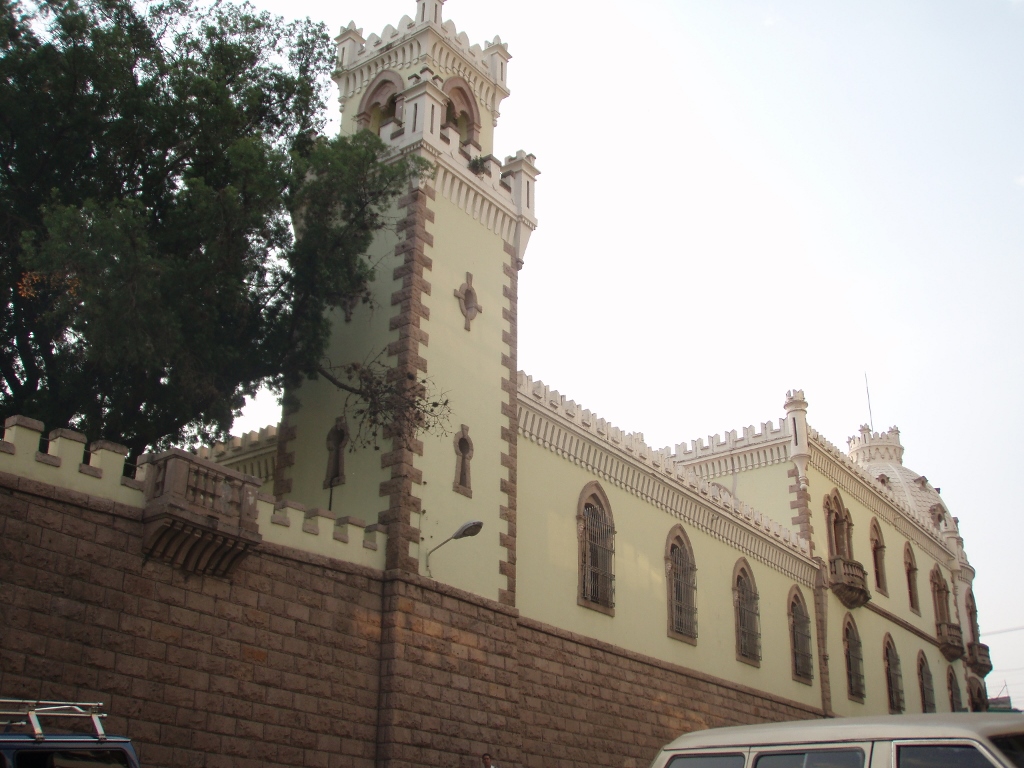 Exterior of the Old Presidential House of Honduras
Exterior of the Old Presidential House of Honduras
It was precisely near this edifice that I crossed one of the numerous bridges over the Choluteca river and also from Tegucigalpa to the city of Comayagüela that together with Tegucigalpa constitutes the Central District which in fact is legally and politically the capital of Honduras under the collective name of Tegucigalpa.
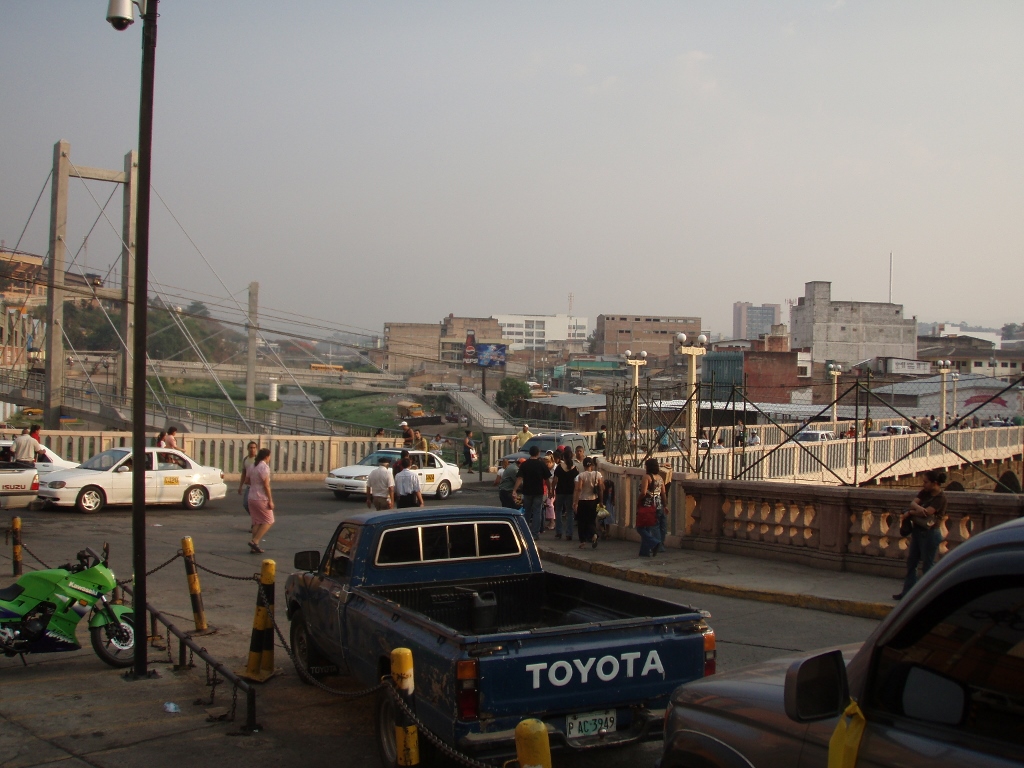 Near a bridge over the Choluteca
Near a bridge over the Choluteca
When I crossed the bridge, I looked back once again filming the area. Again I could see the Old Presidential House of Honduras as well as the Choluteca.
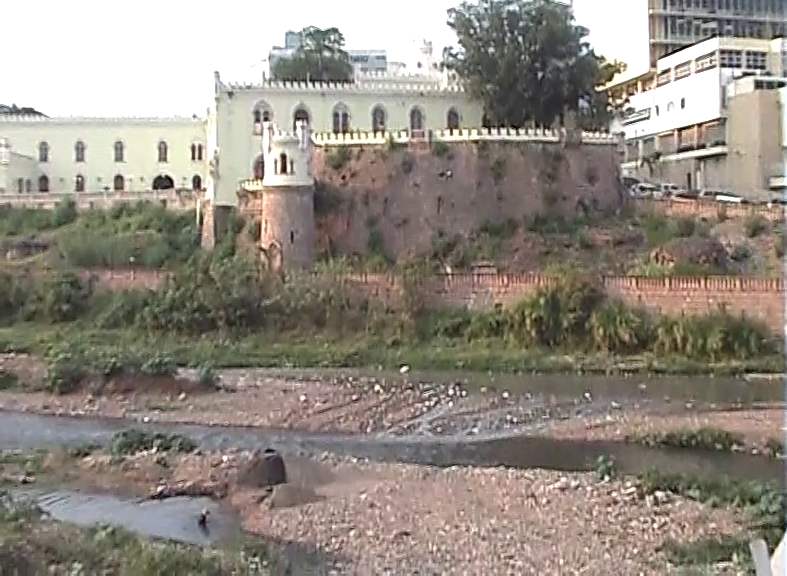 Old Presidential House of Honduras and the Choluteca river
Old Presidential House of Honduras and the Choluteca river
If you look a little closer at the photo above, it is possible to notice a man standing in the chest-deep water. I found him interesting for I could not fathom what he was up to. Then I saw he was digging out something there and even throwing it by the shovel in the direction of the bank, but I still could not figure out what this was all about.
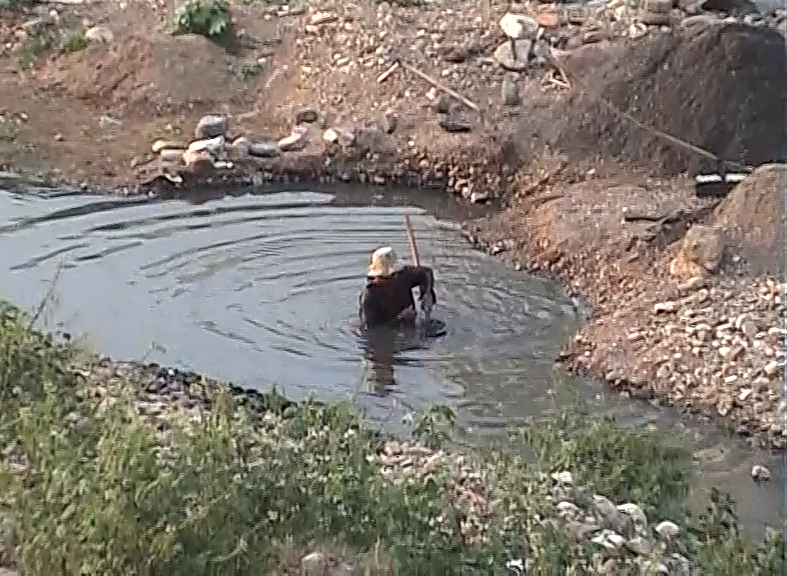 Man in the river
Man in the river
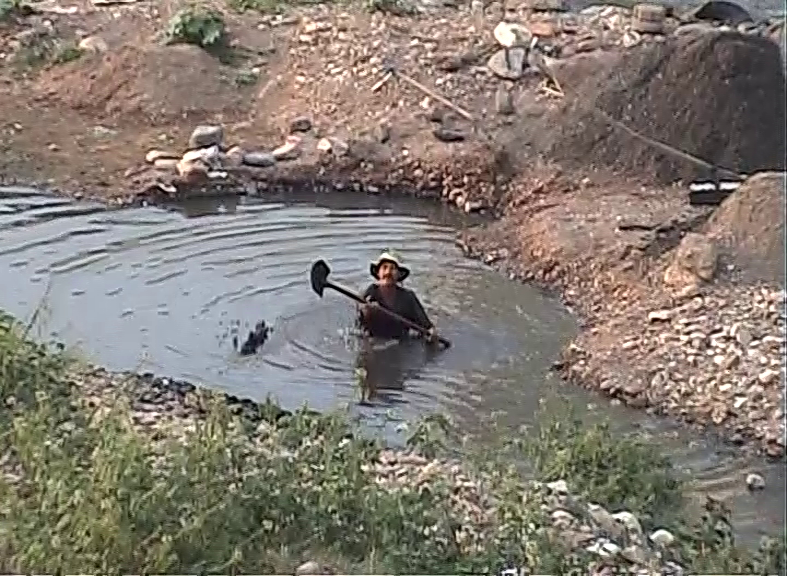 Man in the river
Man in the river
Generally speaking, Comayagüela city in which my hotel was located is considered to be poorer in comparison to Tegucigalpa, but what worried me a little was that there were a lot of different shops and stands in the area close to my hotel and consequently there were a lot of people on the streets, the crowds being particularly handy for pickpockets. All of this together, plus the stories I had heard along the way, did not fill me with too much confidence, especially since I was alone, so I did not take the photo and video cameras out of my small backpack, opting rather just to go to the hotel and my room there.
Like the previous guest-houses and small hotels at which I had stayed during this journey, the hotel in Tegucigalpa was also modest, while the room has stuck in my memory since it was all covered by some bright yellow oil paint. This seemed quite psychedelic, especially at night when the light bulb hanging from the ceiling was lit, but this was not a problem for me. What I found very interesting during this entire journey was that regardless of the modesty of accommodation, almost in all of the rooms I had a TV set, even with cable TV that regularly offered numerous programmes from different countries of Central America, as well as the US channels. Thus, in the evening, before going to sleep I could watch some US series. Although I understand Spanish well enough, I don’t like synchronised series and films, preferring subtitles or simply listening in the original language.
The following day I woke up slowly, for there was no need to be in a hurry. When I arrived in Tegucigalpa the day before, I wanted to buy a ticket for the continuation of my travel right away, but that was not possible. Still, it was good that I tried to do this, for in this way I learned that the coach was leaving around 11 am.
So, since I had enough time (the hotel was close to the terminal of the transportation company), I went up to the hotel’s roof terrace so that I could take photos of the surroundings quite safely from there. Perhaps I could have done it from the street level as well, but this way I felt more secure.
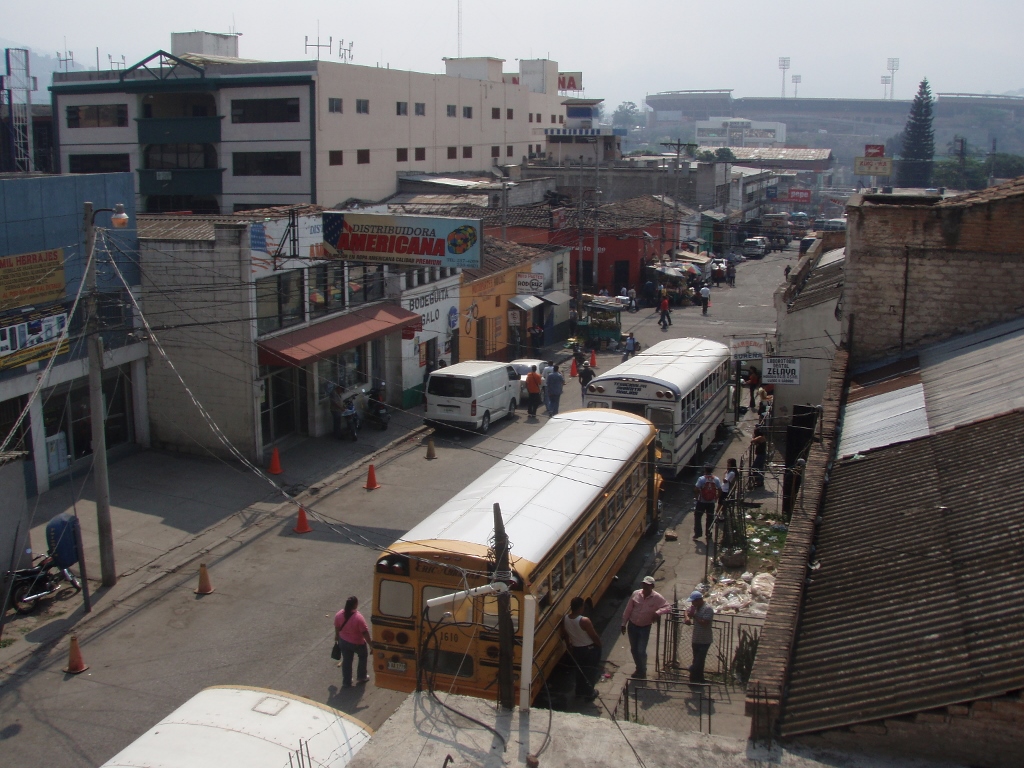 Surroundings of the hotel in Tegucigalpa; a little farther is the national football stadium
Surroundings of the hotel in Tegucigalpa; a little farther is the national football stadium
I also had the time to check my emails and I tried to call the hotel in my next destination, the small town of Copán Ruinas. As I had a guidebook for Central America which included recommendations for different hotels, before reaching the destination I would decide where it would suit me most to stay and then, whenever feasible, I would call the place in advance to book a room. However, there was something wrong with the phone number of that hotel, which left me a little confused. I thought that maybe I got something wrong or that the connections were currently down. No problem. I decided to call a little later from the terminal.
Since I didn’t have the ticket and I didn’t know what else to do in my psychedelically yellow room, I headed for the terminal a little earlier. There they confirmed that the coach was to leave at 11 am, arriving in Copán Ruinas around 6 pm. As it would turn out, the coach departed around 11.30 am and arrived at 7.30 in the evening.
I settled in a small waiting room and started to wait, but then I remembered that it would be good if I called the hotel and booked the room, especially since I would arrive at dusk. However, since there was no public phone at that small terminal, I had to go somewhere across the street where I was told there was a place with a public phone. I felt it silly to drag my big backpack with me and I thought that there would be a problem if the phone booth was small, for I certainly would not fit in, so my trip there would be in vain. So, I leaned my big backpack against the chair in which I had been sitting, asking the few people who were waiting for the same coach as me to look after it while I’m away telephoning.
By their utterly shocked faces I realised I made a cultural faux pas – apparently nobody was looking after anything for anybody here and my impression was that they were so shocked because there was somebody who had so much trust in them and the Universe that she was ready to leave her big backpack with all the things and go somewhere, regardless of how short period of time was in question. Or perhaps they just thought I was crazy and naive.
Since nobody volunteered to look after my backpack, I hesitated a little and thought that I would have to put it on after all and go like that to that phone booth. And then one gentleman who was sitting in the waiting room offered his mobile phone to me to call whomever I needed to. That was extremely kind of him. We dialled the hotel together a couple of times, but I still kept getting some weird sound and so in the end I gave up, deciding to find myself a room once I arrived in Copán Ruinas. Of course, I thanked that gentleman wholeheartedly.
So, a little later than announced, we boarded the coach and soon it left the terminal. While the coach was still passing through the city, actually as we were waiting at a traffic light, I took the opportunity and took a photo of a house. As a matter of fact, not of the house, but rather of the fence around the house.
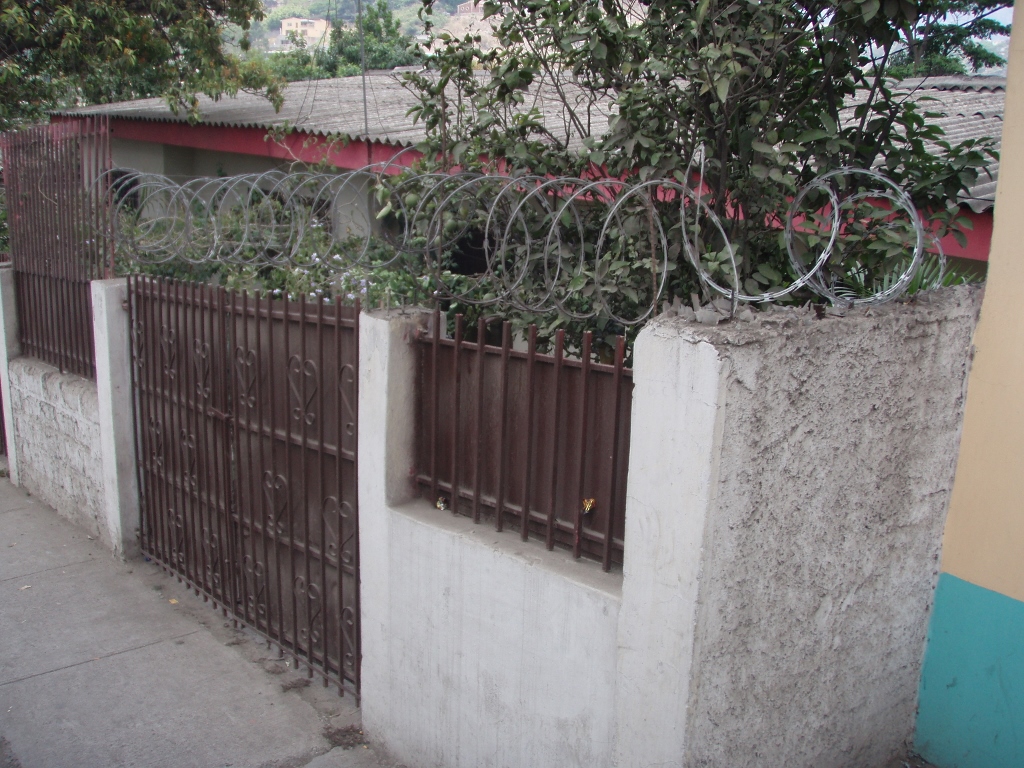 One of the possible solutions for fencing off a house and its respective yard
One of the possible solutions for fencing off a house and its respective yard
Generally speaking, like in the most of the places I have visited in Latin America, because of the security issues, most of the private houses have a solid and solidly closed metal gate and some type of high fence facing the street, most often a visually uninteresting high wall or, as in the case of this house, insufficiently high fence, but then with additions in the shape of barbed wire. Sometimes these additions on the wall may be in the form of fragments of broken glass bottles, but I’ve also seen places where electricity runs through the barbed wire. The selection of the level of protection depends on the neighbourhood, as well as the property itself, that is, the attractiveness of the property of the owner of the house and the yard.
One other thing that I regularly saw during my coach/chicken bus rides on this particular journey were vendors standing on the pavement, wherever suitable, i.e., wherever there was a chance for the vehicles to stop, albeit briefly, offering the already pealed fruits packed into small plastic bags or some snacks. This radiant young man had only fruits to offer. The offer is placed on the top of a long pole, so that the bags can reach the opened sliding window of the vehicle, the passenger than chooses what he wants and puts the money into a wooden box on the top of the pole. (In fact, the young man in the photo also had a couple of plastic bottles with soft drinks in that box that were also a part of the offer.)
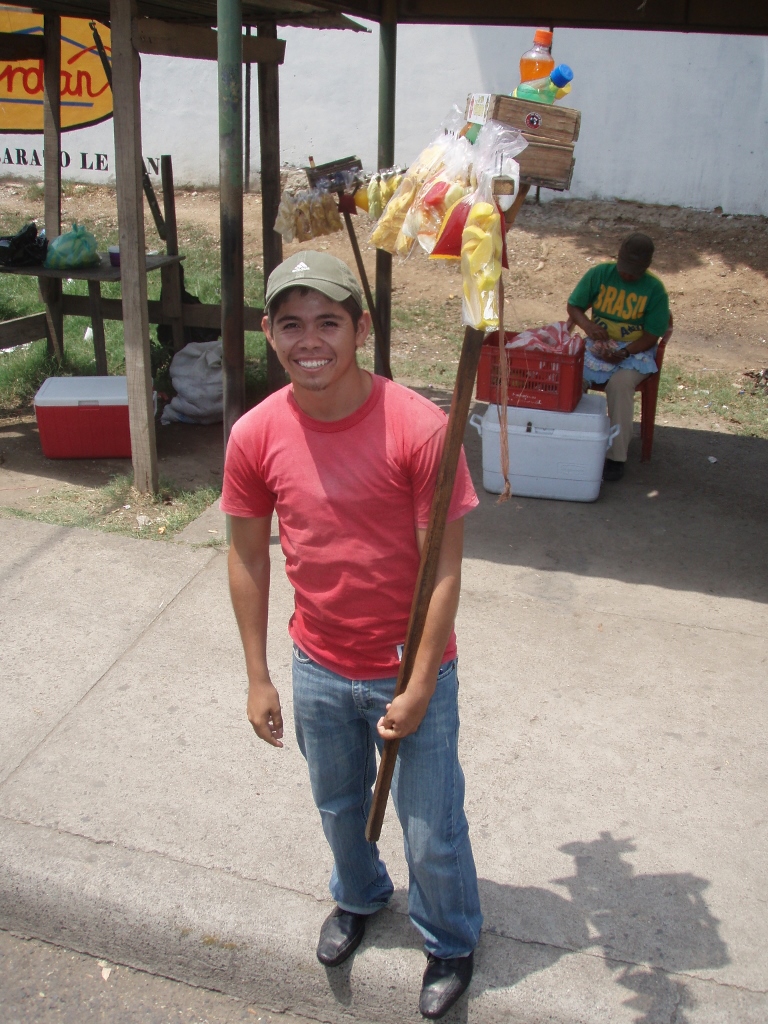 Fruits, fruits, buy my delicious fruits...
Fruits, fruits, buy my delicious fruits...
One other thing that was a regular occurrence in inter-city transportation were sellers of medicinal preparations, as well as preachers, who would get on the coach/chicken bus and address their “audience” there, as was the case on this coach from Tegucigalpa.
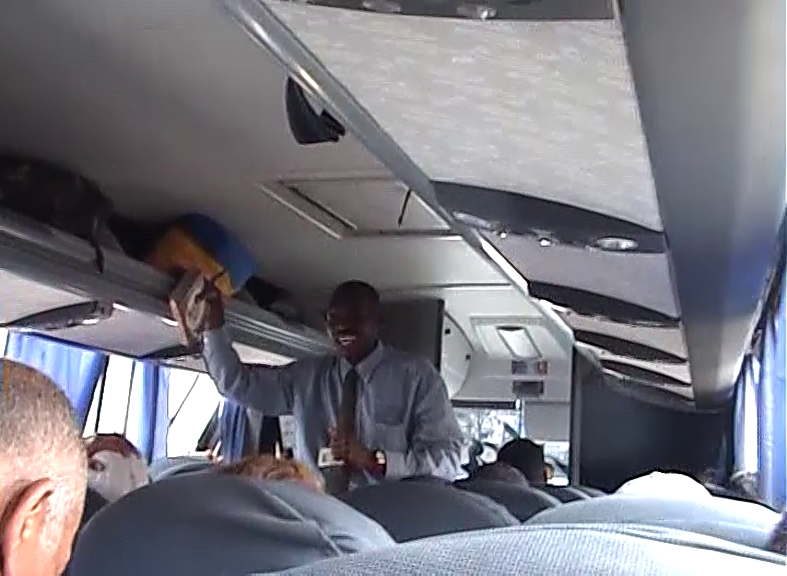 Preacher on the road to Copán Ruinas
Preacher on the road to Copán Ruinas
When they would finish what they had to do, they would just get off the coach and probably wait for the next one.
Be as it may, I was quiet for a while and then I started chatting with some guy who was sitting next to me. Still, the most interesting chatting was with the gentleman from the waiting room in Tegucigalpa. He was exceptionally nice, decent and unobtrusive, but after one stop that we had, he moved to the row in front of me and soon we started to talk. He expressed great interest in my native tongue and he found it particularly remarkable that Serbian is in fact originally written in Cyrillic, but it could be written in Latin equally. Thus we came to the point that his name and surname could even be translated into Serbian. Since his name was Jorge Paz, the Serbian version would be Đorđe Mirić, at least in this playful translation. I remember that I even wrote for him on a piece of paper both versions (in Cyrillic and in Latin) and in the end we also exchanged emails addresses and, albeit sporadically, we have kept in touch to the present times. Since he used to send me some publications, I learned that at the time he was the Secretary of the Association of Writers of Honduras, which quite clearly explained his keen interest in a language that comes from far away.
Although in Tegucigalpa I was sold a ticket for a direct coach to Copán Ruinas, actually I had to change the coach in the city of San Pedro Sula. There I also parted from Jorge who was continuing to the city of La Ceiba on the coast of the Caribbean Sea. Unfortunately, I did not have the time to go to the Caribbean coast either in Honduras or Nicaragua. Although the coasts are not too famous because they don’t have the beaches that most of the tourist find attractive, still in the coastal areas of both of these countries there are numerous national parks and nature reserves, plus both of the countries have a large number of smaller islands with nice and eye-catching beaches.
In any case, I transferred to another coach at the terminal in San Pedro Sula and soon we moved on. As I’ve mentioned before, Honduras has a lot of hills and mountains, while the lowland areas are linked more to the coastal regions on both sides of the country. It is precisely San Pedro Sula that I was leaving behind that is located in the lowlands and from there the main road leads to the Caribbean coast of Honduras.
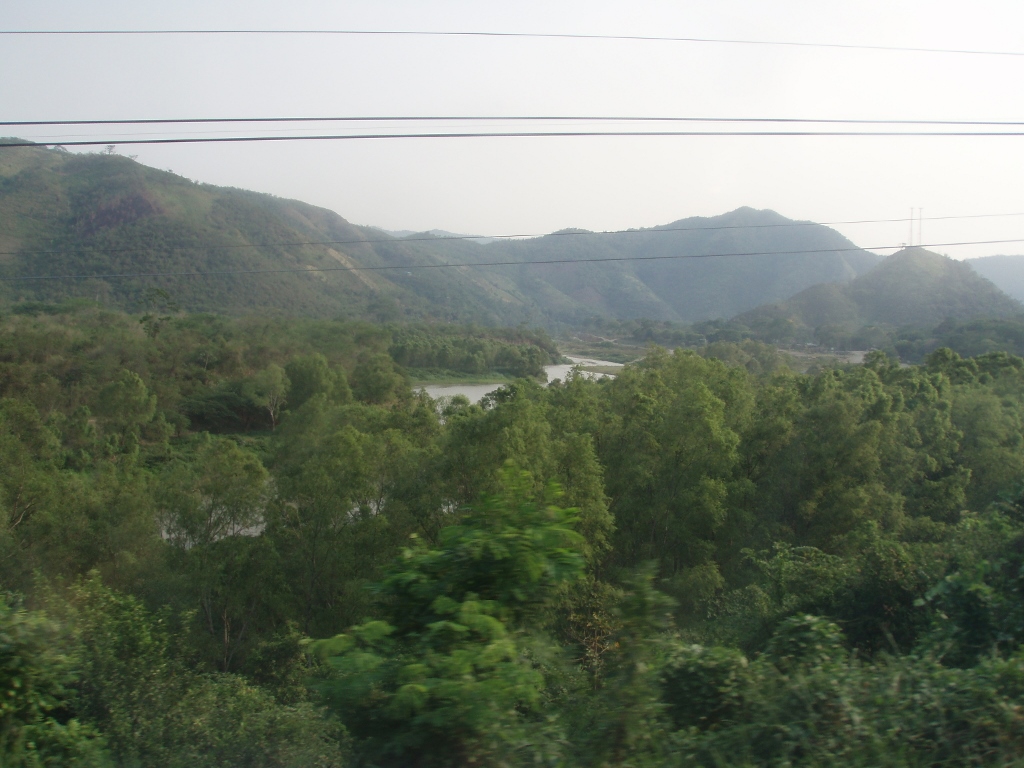 On the road to Copán Ruinas
On the road to Copán Ruinas
As I’ve said, we reached Copán Ruinas in the evening. On the basis of the description provided in my guidebook I was set on staying at one hotel, but it turned out it was undergoing renovation and was closed (that’s why the phone was off), so I found a room in another one. As a matter of fact, this was for the better, for the original hotel was far too uphill and it would be quite a challenge for me to carry my big backpack along such a steep slope, for I could not find any auto rickshaw anyway.
After I had left my things in the room, I went for a short walk around the village for it was safe here and I could go out in the evening. The famous ruins of the ancient Mayan city of Copán are located less than 2 km from the village, that was actually named after the ruins, so the entire village seems to be practically intended for the visits to the archaeological site and it is completely fine-tuned to tourists and consequently full of hotels and restaurants. I took advantage of this in the best possible way by going for a light dinner and then also to an internet-café.
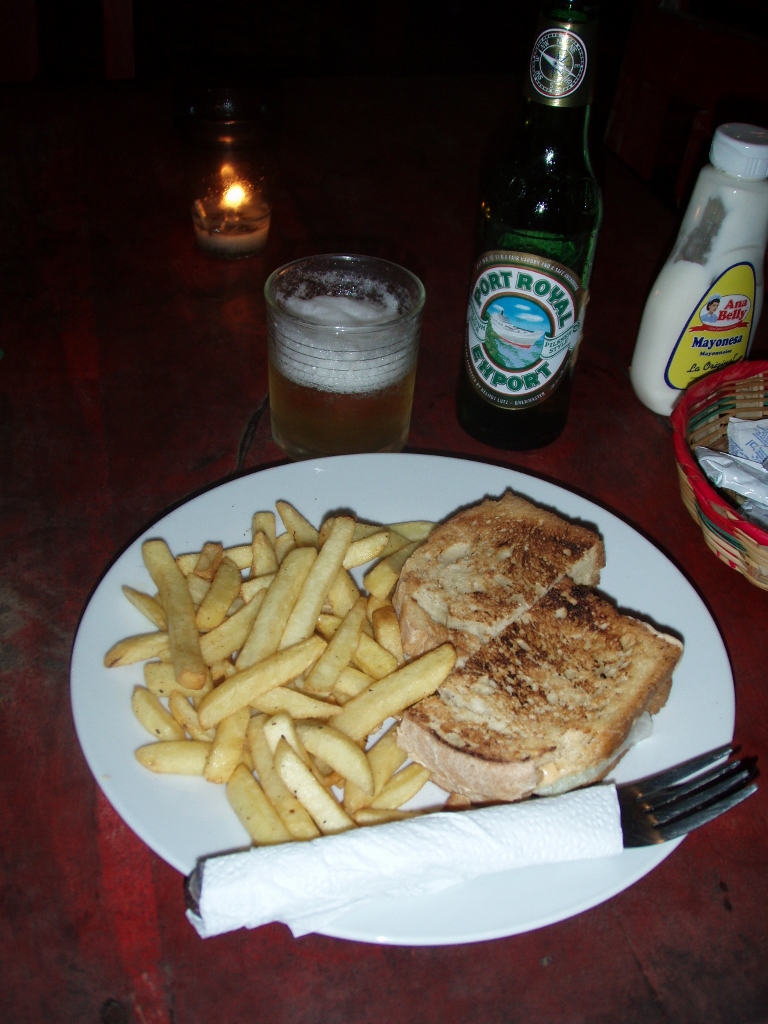 Dinner in Copán Ruinas
Dinner in Copán Ruinas
Following this, I went back to my room, watched TV for a while, did my Tarot reading and in a very relaxed mode went to bed only to realise suddenly that I had forgotten at the internet café my collective and main guidebook for Central America, along with the postcards I had bought in the meantime. What a shock that was! I needed that guidebook for the continuation of the journey. And yet, there was no solution for this new situation this evening.
Like so many times before, as well as after, I was again impressed by the Tarot and its intelligence. Although the reading did suggest a nicely spent day ahead of me, it was clear that things would go slowly in the morning. And so they did.
Namely, my original plan was to get up early and to be at the site before 8 am in order to enter there early (the site opens at 8 am) and visit it as soon as possible. There were two reasons for this. The first one was the heat, i.e., my avoidance of the hottest time of the day, while the other one was the continuation of my journey.
And so I woke up in the morning, but I was very nervous. Already around 8 am I was at the internet-café and inside, through a glass door, I could see my guidebook standing on the table at which I had sat the evening before. Since there was still nobody there, I managed to find a neighbour who promised she would tell the girl working at the internet-café to save the guidebook for me. Afterwards I went to do the sightseeing of the Copán ruins, but meanwhile I took a few photos around the centre of the place.
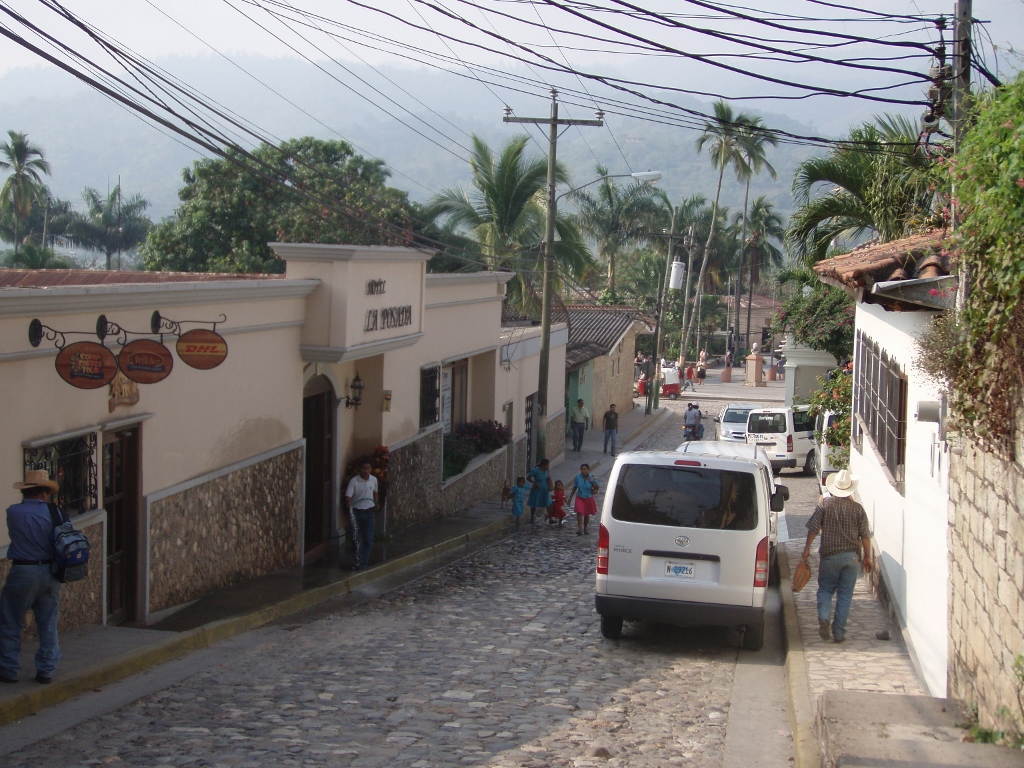 Street in Copán Ruinas
Street in Copán Ruinas
I also passed by a large mango tree where the fruits were already quite ripe.
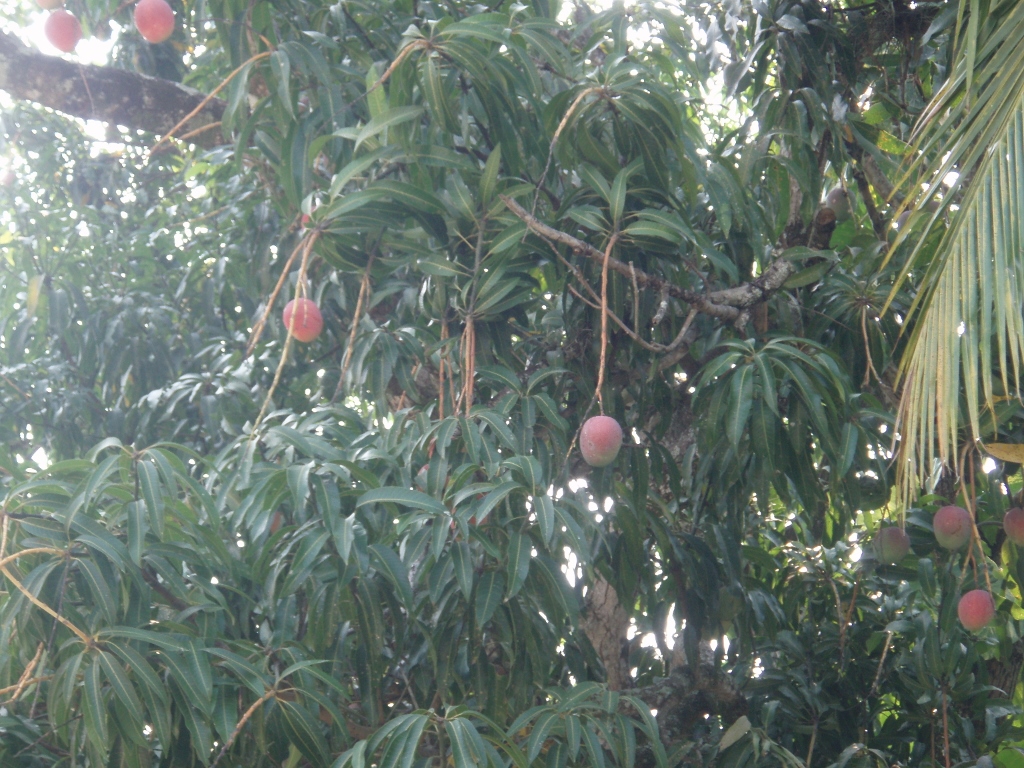 Mango tree and fruits
Mango tree and fruits
Although Copán Ruinas is a very developed tourist place, there are no big hotels and edifices in it. There are mostly smaller houses, with few exceptions, and it all looks very charming.
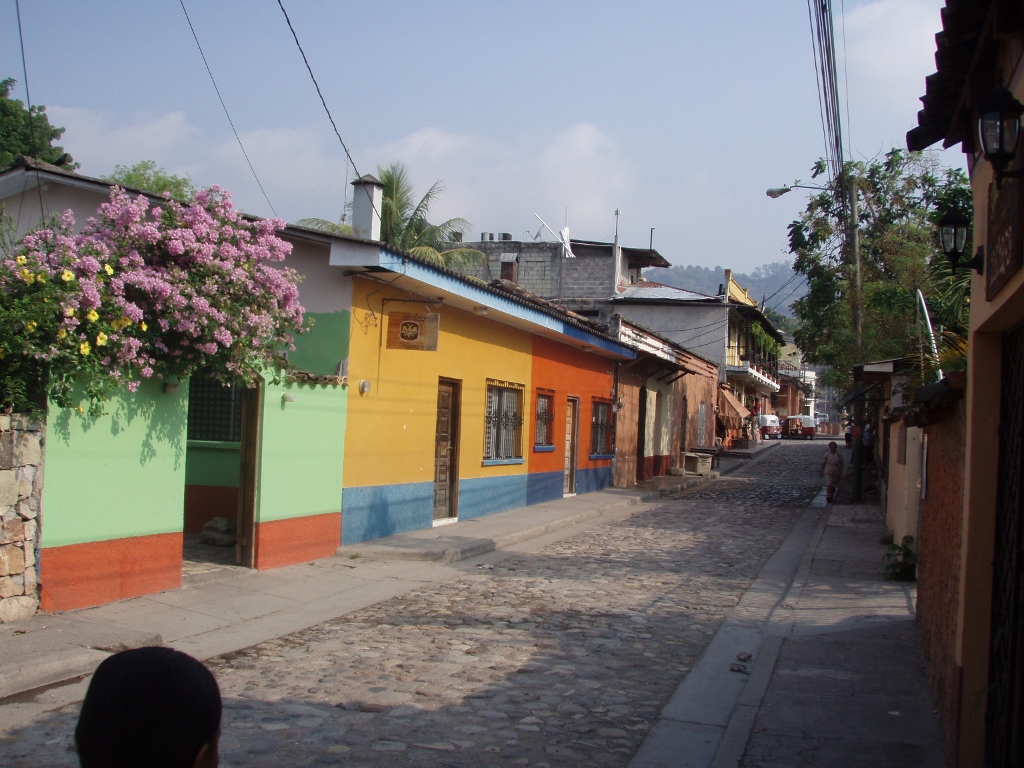 Street in Copán Ruinas
Street in Copán Ruinas
I also walked to the main square called the Central Park and although it is mostly paved, there are some green sections in it.
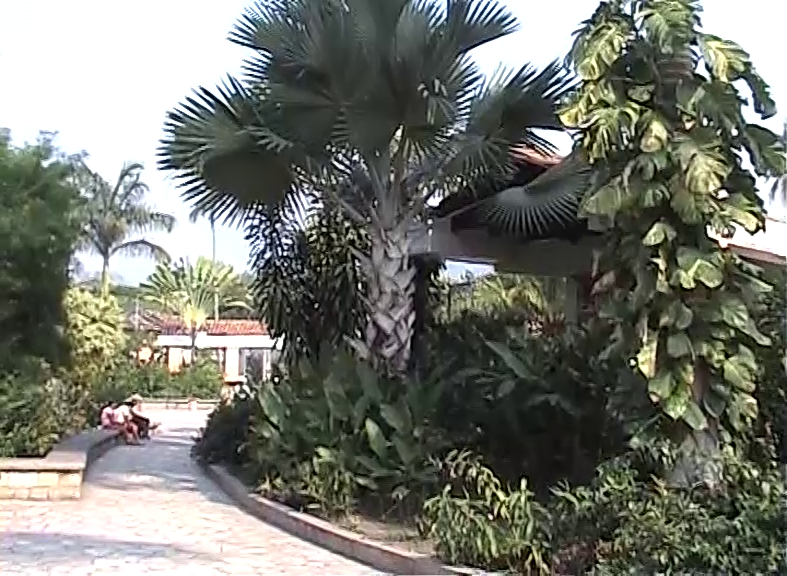 Central Park in Copán Ruinas
Central Park in Copán Ruinas
Then I walked to the archaeological site that is less than 2 km away from the place and there I was greeted by a couple of red macaws who were probably tamed and used there to add decoration to the trees. The macaws really have an incredibly beautiful colour of their feathers.
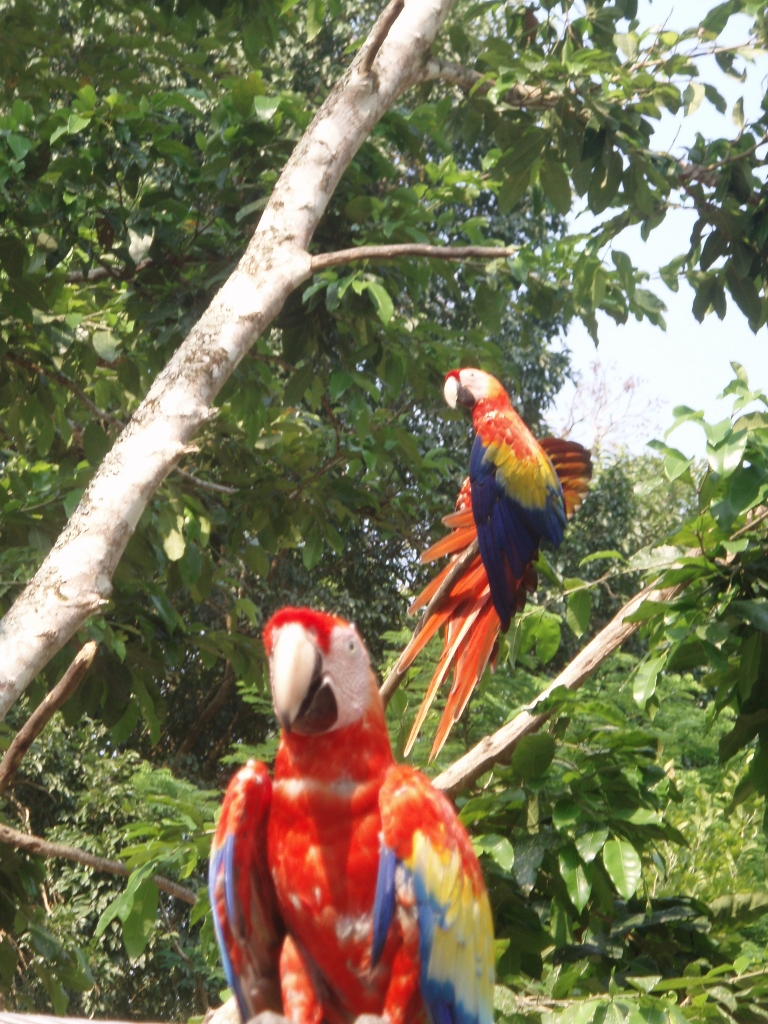 Macaws at the entrance to the archaeological site Copán
Macaws at the entrance to the archaeological site Copán
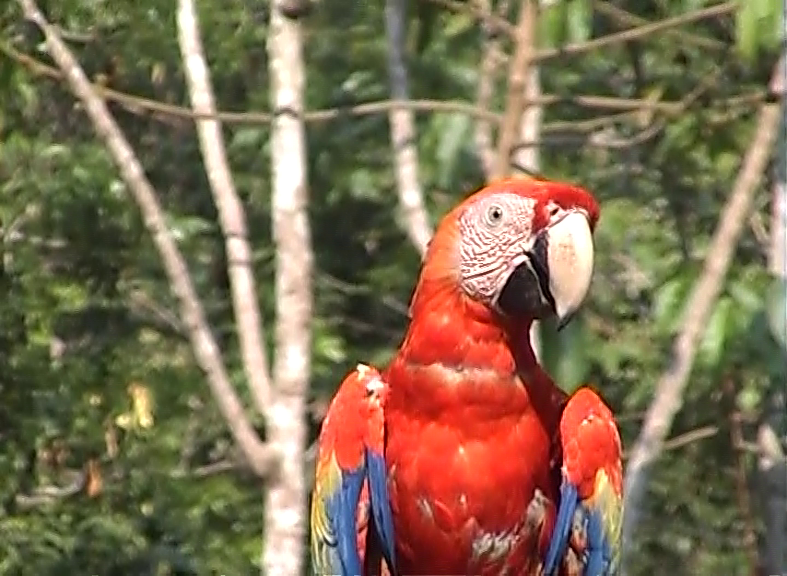 Macaw at the entrance to the archaeological site Copán
Macaw at the entrance to the archaeological site Copán
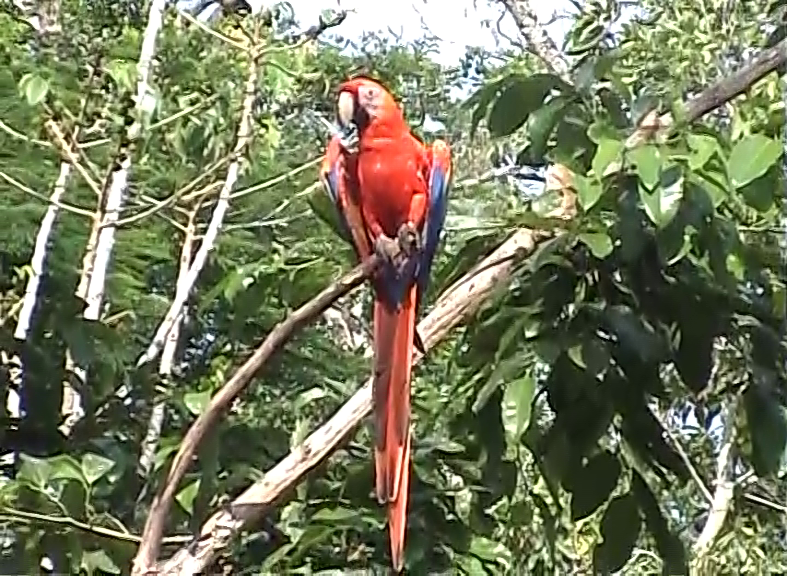 Macaw at the entrance to the archaeological site Copán
Macaw at the entrance to the archaeological site Copán
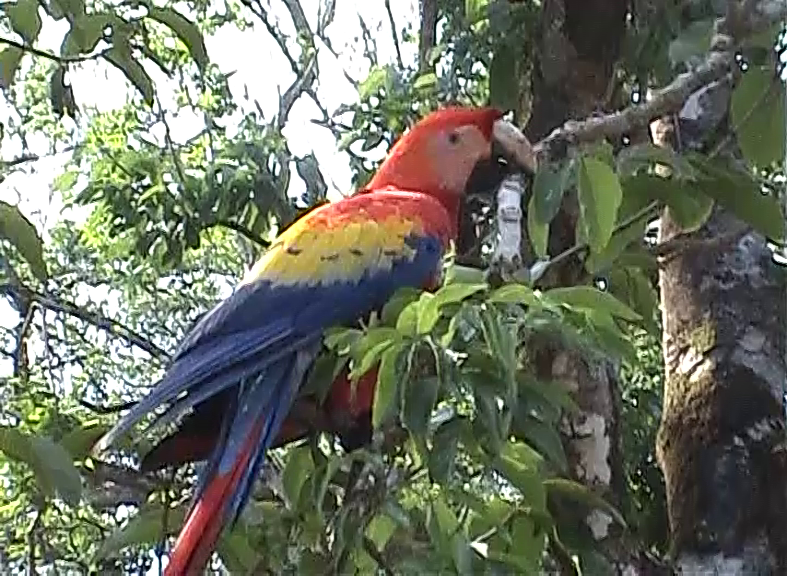 Macaw at the entrance to the archaeological site Copán
Macaw at the entrance to the archaeological site Copán